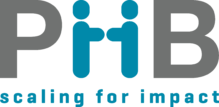
Report: Supporting a ‘New Channel’ of Agency Banking in Uganda for UNCDF
It was a pretty big deal when UNCDF partnered with five banks in Uganda to design and roll out agency banking throughout the country of some 43 million people. With mobile money services active since 2009, the banks were eager to engage in branchless banking activities, pending the issuing of regulation from Bank of Uganda in 2017.
As a result, agency banking is now becoming business-as-usual in many areas there – thanks to the success of this UNCDF project. PHB has been honored to contribute its consulting expertise to the strategy and design, the development and implementation of the pilot project, and then to the publication of the final report on this large undertaking.
The release of the report in February 2019, “Introducing Agency Banking in Uganda: A New Channel to Increase Financial Inclusion,” details expertise applied and learned in supporting the roll-out of agency banking from September 2016 to July 2018. “There are now hundreds of thousands of clients able to access the five partnering banks’ services remotely, through thousands of agents spread across the country,” said Ciprian Panturu, a partner of PHB Development who was embedded in the UNCDF project to manage the pilot and supervise technical assistance to participating banks. “PHB has worked with UNCDF in projects around the world, either by providing technical assistance to its partners or by managing projects. I’m glad they trusted our expertise once again – especially here in fast-paced Uganda – to help achieve the intended results.”
And, it should be mentioned that Ciprian is also lead author of the UNCDF report!
Results of the pilot were largely successful compared to similar initiatives in other countries. Factors in the success include application of previous experience in designing such a multi-stakeholder pilot, national conducive context, and there was a clearly identified need for such an alternative delivery channel from the financial institutions.

“We applied a combination of internal and external learning within the project: what we assumed during the design had been thoroughly tested and proven throughout the implementation of the pilots, and then adjusted to maintain a cohesive logic of the channel within the banks’ ecosystems” said Ciprian, “It was crucial to ensure that the banks had a head start with expertise accumulated through similar implementations, and hands-on support that they needed for this to be a success – and I believe this was delivered.”
Some of the key findings and confirmations from the Uganda Agency Banking report include:
Banks
- Agency banking is a complex channel to build, and banks should approach such transitions as aClients can now access banks’ services through agents around the country.
reshaping of their general strategies – with a human-centric design.
- Rolling out agency banking requires a sustained, flexible and proactive approach – along with regular operations. Banks needed to provide sound systems carrying relevant services, to monitor agents and their operators, as well as acquire, educate and retain customers. It is also important to understand that change takes time, and real proof of value comes only through verifiable results.
Agents
- Banks identified rural schools and savings and credit cooperatives (SACCOs) as ideal agents to start with, ensuring transaction volumes in addition to sufficient liquidity to handle them.
- Waiting times in agent onboarding may decrease motivation, and agency banking regulations requiring Bank of Uganda approval for each agent, as well as proof of having a regulated account for a minimum of 6 months, can make agent selection difficult in rural areas.
Customers
- Payments for goods, services, utilities and school fees attract early adopters – who also seek to avoid transportation costs and travel time. Established value chains should also be explored to increase adoption by new customer segments.
- Fewer women initially adopt the channel, but when they do, they make regular transactions. For example, female customers represented only about 20 percent of all customers at one bank, but 94 percent were active. In contrast, only about 56 per cent of its male customers were active.
The complete report “Introducing Agency Banking in Uganda: A New Channel to Increase Financial Inclusion” can be downloaded at the following URL (PDF). https://www.uncdf.org/article/4381/agency-banking-in-uganda-a-new-channel-to-increase-financial-inclusion
PHB’s track record of providing expert consultation for UNCDF includes the launch of digital financial services in Lao PDR over a four year period from 2014-2018. In Laos, PHB worked with a wide network of stakeholders for an extended period to help build the DFS ecosystem from the ground up. PHB also helped support a digital payment system with UNCDF from 2016 – 2018 in Benin for the Zem moto-taxi drivers and their passengers, thus increasing financial inclusion for essential service providers in the cities.
Stay Connected
Launch


